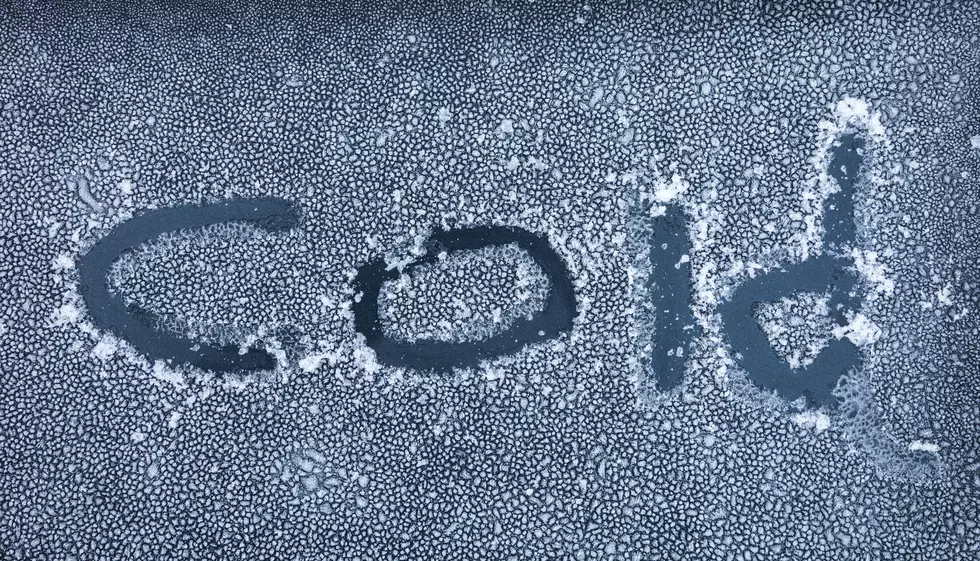
Central New York in the Deep Freeze With Wind Chill Advisory
If COVID-19 isn't enough to make you wear a mash, bitterly cold wind chills may do the trick. The National Weather Service has a Wind Chill Advisory in place starting at 10 tonight, (1/28), until 11 tomorrow morning. And why not add some Lake Effect Snow Showers too.
...WIND CHILL ADVISORY IN EFFECT FROM 10 PM THIS EVENING TO 11 AM EST FRIDAY...
* WHAT…Very cold wind chills expected. Wind chills drop between 15 and 24 below zero late tonight.
* WHERE… Northern Oneida, Onondaga, Madison, Southern Oneida, Cortland, Chenango, Otsego, Delaware and Sullivan counties. The Schoharie Valley, western and central Mohawk Valley,
Helderbergs, southern Adirondacks and southern Green Mountains of Vermont.
* WHEN… From 10 PM this evening to 11 AM EST Friday.
* IMPACTS… The cold wind chills could cause frostbite on exposed skin in as little as 30 minutes.
* ADDITIONAL DETAILS...Temperatures will fall below zero overnight with northwest winds gusting to 25 to 30 mph.
There's a good chance we'll see the wind chill advisory repeated again Friday night into Saturday as temperatures will stay near zero overnight. And just for good measure, Mother Nature will toss in some Lake Effect snow showers tonight and again early tomorrow morning.
Lake effect snow showers and snow squalls are likely tonight, impacting travel at times, especially for central New York
As any experienced Central New Yorker knows, dressing appropriately is the key to avoiding frostbite in frigid times. With frostbite potential in as little as 30 minutes, covering up exposed areas is important.
- Wear loose, lightweight, warm clothing in several layers. Trapped air between the layers acts as an insulator. Layers can be removed to avoid perspiration and subsequent chill.
- Outer garments should be tightly woven, water repellent and hooded.
- Always wear a hat or cap on your head since half of your body heat could be lost through an uncovered head.
- Cover your mouth with a scarf to protect your lungs from extreme cold.
- Mittens, snug at the wrist, are better than gloves because fingers maintain more warmth when they touch each other.
Cold temperatures put an extra strain on your heart. Heavy exertion, like shoveling snow, clearing debris or pushing a car can increase the risk of a heart attack. Here's a few things to keep in mind when working outdoors.
SLOW DOWN when working outdoors.
- Take frequent breaks.
- If you feel chest pain -- STOP and seek help immediately.
Prolonged exposure to cold temperatures can cause hypothermia, especially in children and the elderly. Keep a close eye on these symptoms to avoid getting hypothermia.
- Inability to concentrate
- Poor coordination
- Slurred speech
- Drowsiness
- Exhaustion
- Uncontrollable shivering, followed by a sudden lack of shivering
If a your body temperature drops below 95 degrees Fahrenheit, get emergency help immediately. Remove wet clothing, wrap the victim in warm blankets and give warm, non-alcoholic, non-caffeinated liquids until help arrives.
You can get frostbite and not even know it. There is no pain associated with the early stages, so watch for these danger signs:
- Numb skin that may become flushed. Then it turns white or grayish-yellow.
- Frostbitten skin feels cold to the touch.
If frostbite is suspected, move somewhere warm. Cover the frostbitten area with something warm and dry. Never rub it. Then get to a doctor or hospital as quickly as possible.
Don't forget about the pets. If it's too cold for you, it's too cold for them too.



